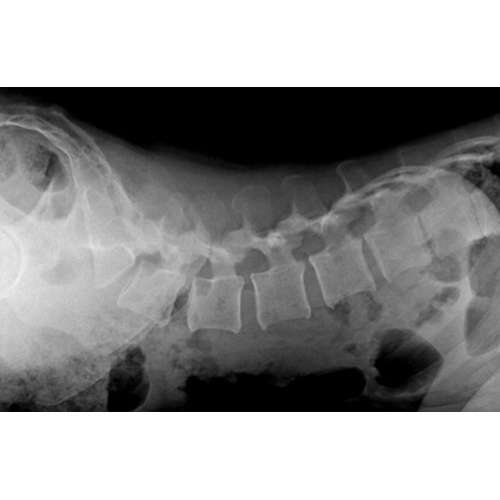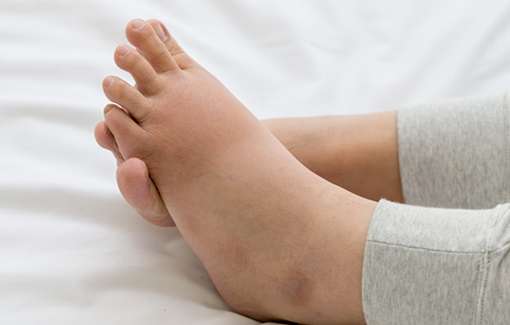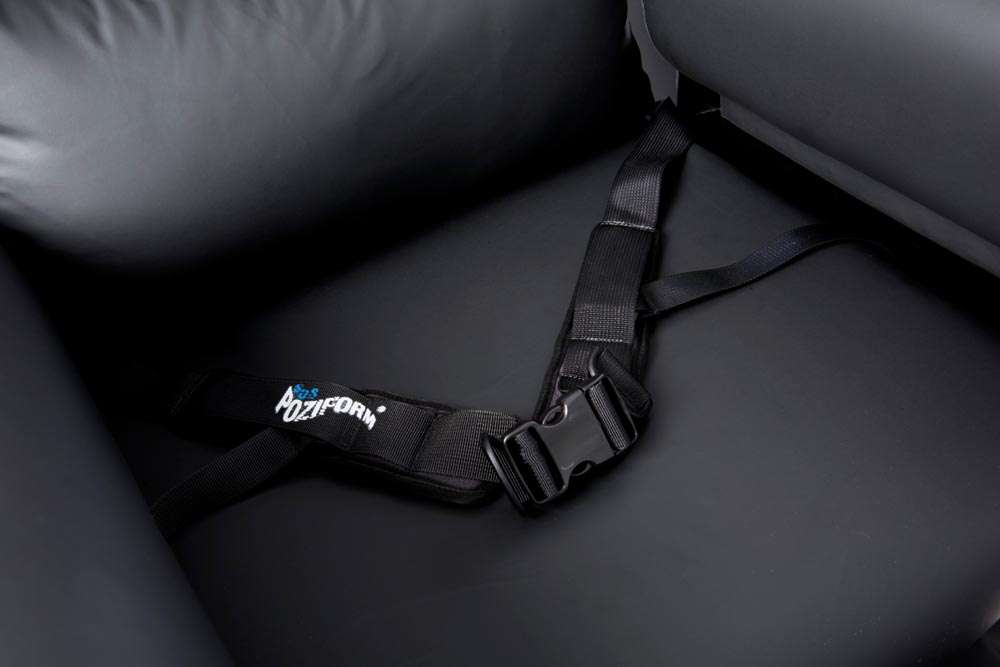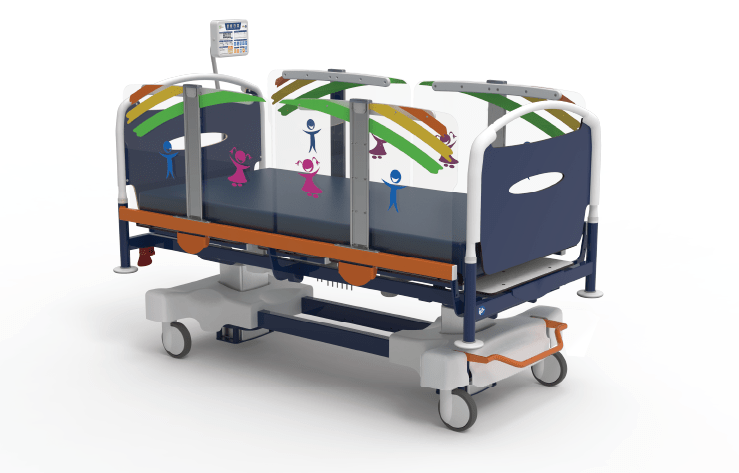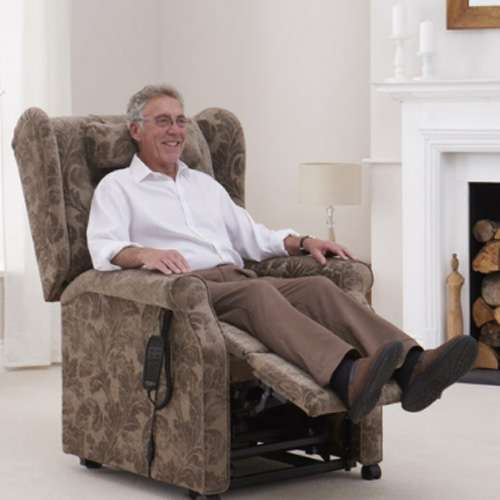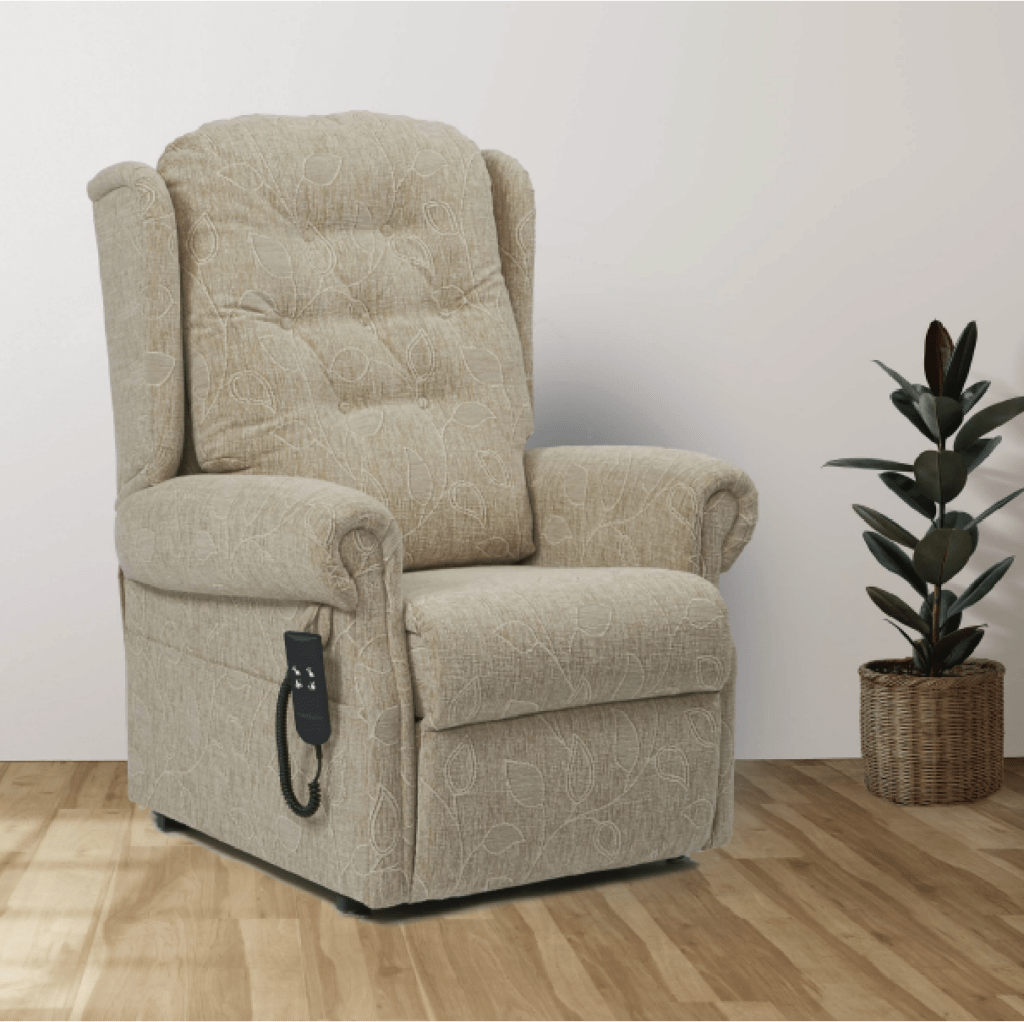Getting the right back support for lordosis can be a bit more challenging because it’s a condition that’s usually associated with other things like muscular dystrophy.
Nevertheless, people with lordosis still need certain things from their specialist seating to ensure that they have the best support available.
So here are a few things you should consider when you’re specifying specialist seating for people with lordosis.
Jump straight to…
What is Lordosis?
Like scoliosis and kyphosis, lordosis is a spinal deformity. Technically, everyone has a slight lordosis because our spine curves inwards (towards the front of our body) to help absorb any shock, giving the spine its characteristic ‘S’ shape. If the spine curves inwards too far in either the cervical or lumber regions of the spine, then it’s considered an increased lordosis (lordotic curve).
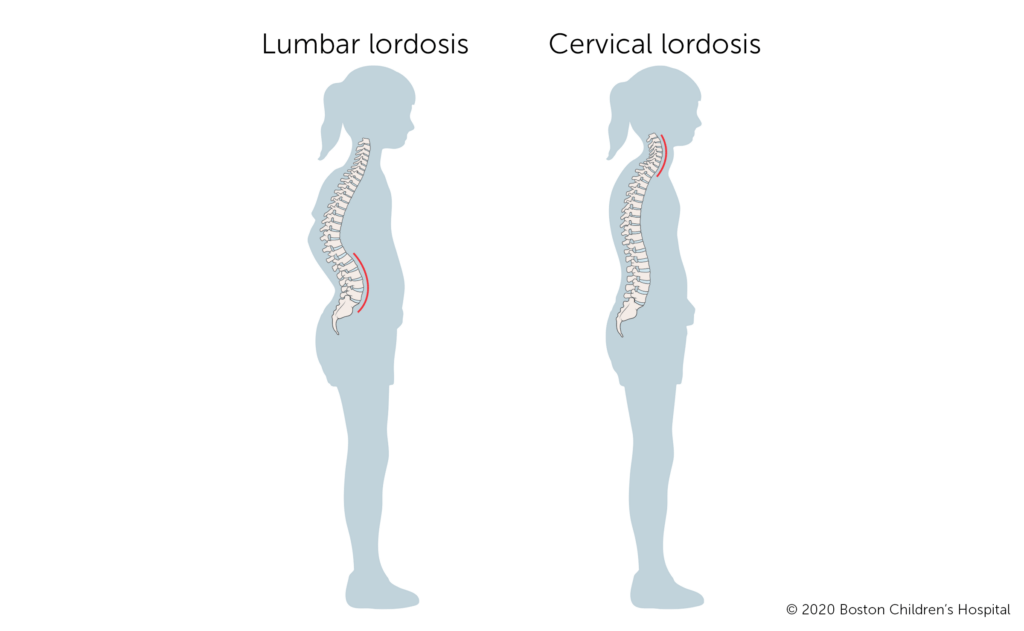
Lordosis can be caused by anything like tight spinal muscles, instability of the pelvis, or uneven muscle tone. It is a common presentation with neuromuscular conditions like muscular dystrophy, spinal muscular atrophy or spina bifida.
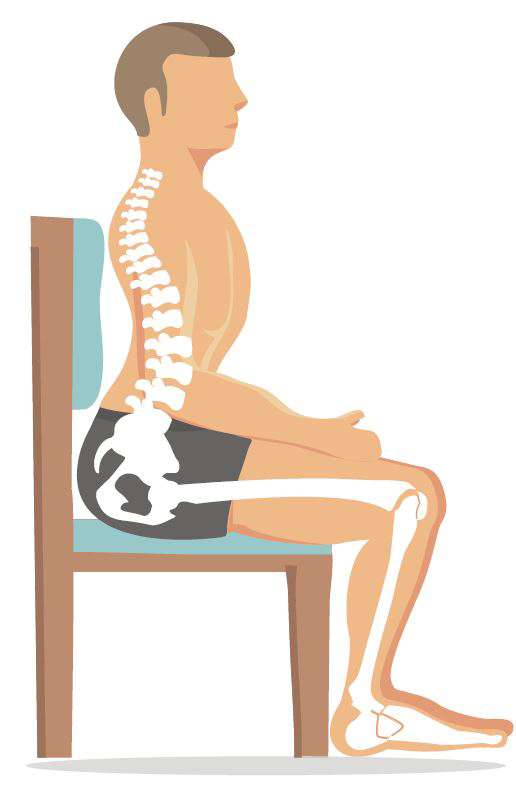
Here is a diagram of someone with lordosis. As you can see, there is a much more pronounced inward curve in the lumbar region.
Cervical lordosis occurs in the small of the neck (cervical region) and pushes your neck further forward, which can impact swallowing and talking.
This blogpost focuses on lumbar lordosis (swayback) as this is more relevant to a seating scenario and can affect pelvic positioning.
Read our blogpost on kyphosis, lordosis and scoliosis to learn more about these postural conditions, or watch the video below!
Supporting the Pelvis with Lordosis
If you’ve read any of our other seating articles before (wait for it!), you’ll know that the pelvis is the foundation for any good seating positioning and posture. Particularly with lordosis, you need to make sure that the person’s pelvis is in the correct position to give them the most support.
Anterior pelvic tilt can actually be a cause of lordosis. This is where your hips are tilted too far forward, which can consequently cause a more pronounced arch in your lower back.
If your client has an anterior pelvic tilt, then you might want to choose a chair that has a tilt-in-space function. This will help the person’s lumbar region to relax, and tilt the pelvis back into a healthier position.
You also need to make sure that the pelvis is kept in a centralised position, with the knees and hips level. This will help create a stable base for a healthy sitting position.
Back Support for Lordosis
With lordosis causing such a curvature of the spine, it’s imperative that you get a chair with extra support in the lumbar region (lower back). This extra support is needed to fill the gap caused by the lordosis so that the client can keep comfortable and well-supported when sat for a long time.
Lumbar support in backrest
For extra lumbar support in chairs for people with lordosis, we’d suggest that you specify a waterfall backrest in your chair. You can then adjust the individual waterfall cushions to make sure that there is plenty of wadding in the bottom section to accommodate the spinal curve.
That being said, we always advise not to put too much wadding or cushioning right at the bottom of the lowest cushion, as this can affect pelvic positioning.
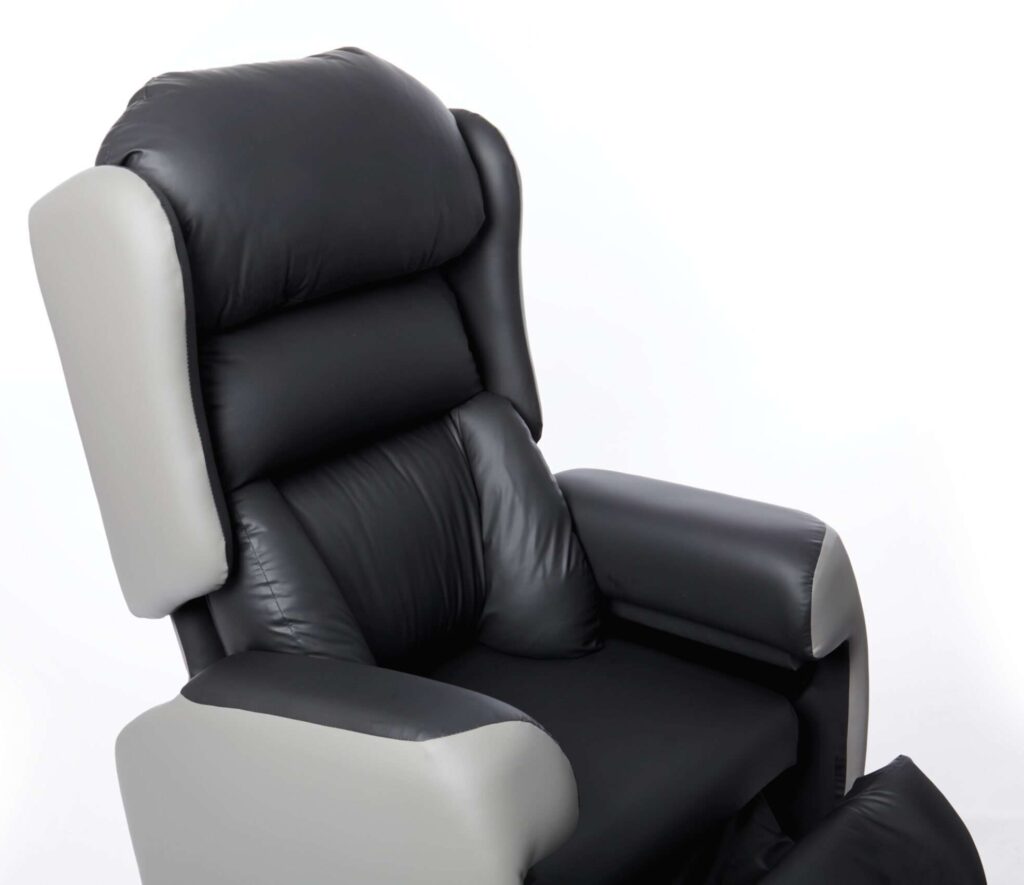
Waterfall lateral backrest – Lento Care Chair
Tilt and recline functions
Using the tilt and recline functions in the chair can greatly assist people with lordosis.
Applying the tilt in space function uses the power of gravity to rest the lumbar region against the backrest of the chair. Variable tilt in space that is easily to adjust with a handset, and changing the angle of backrest recline to open up the hip angle, will help find the right level of lumbar support for the patient.
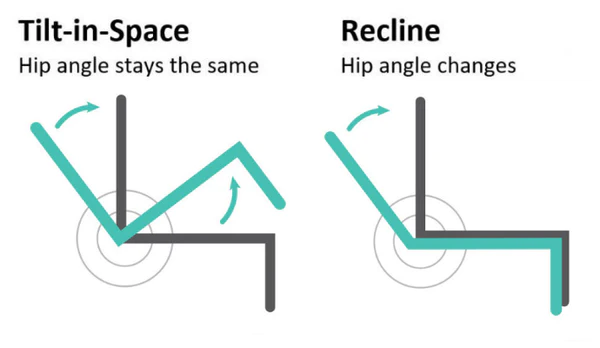
The difference between Tilt in Space & Back Angle Recline
Recommended Chairs and Backrests for People with Lordosis
If you’re looking to specify a riser recliner that will suit someone with lordosis, then we’d suggest looking at the made to measure range. These chairs can be tailored to suit your client and their specific needs.
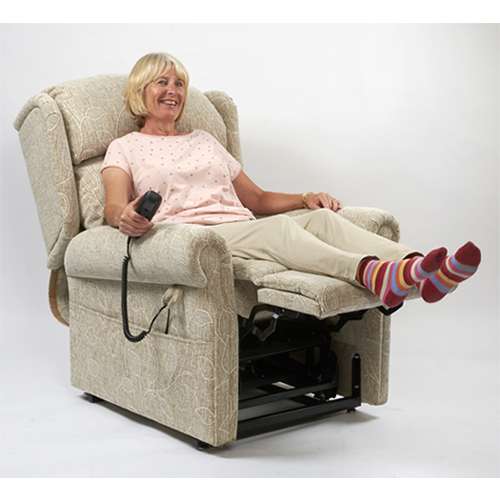
The Brecon rise and recline chair can be made-to-measure, which is ideal for people with lordosis because the severity of their curvature can vary so much.
In terms of care chairs, then the Lento would be most suitable. With its adjustable seat depth, width, and height, you can make sure your client’s pelvis is perfectly positioned when teamed with a waterfall backrest and tilt-in-space. Electric tilt in space is available as an upgrade, which allows the patient to adjust themselves, instead of relying on the carer to adjust using the tilt handle at the back.
The back cushions of the Lento are also attached with Velcro which is particularly good because it allows you to reposition the cushions to suit the client’s needs exactly.
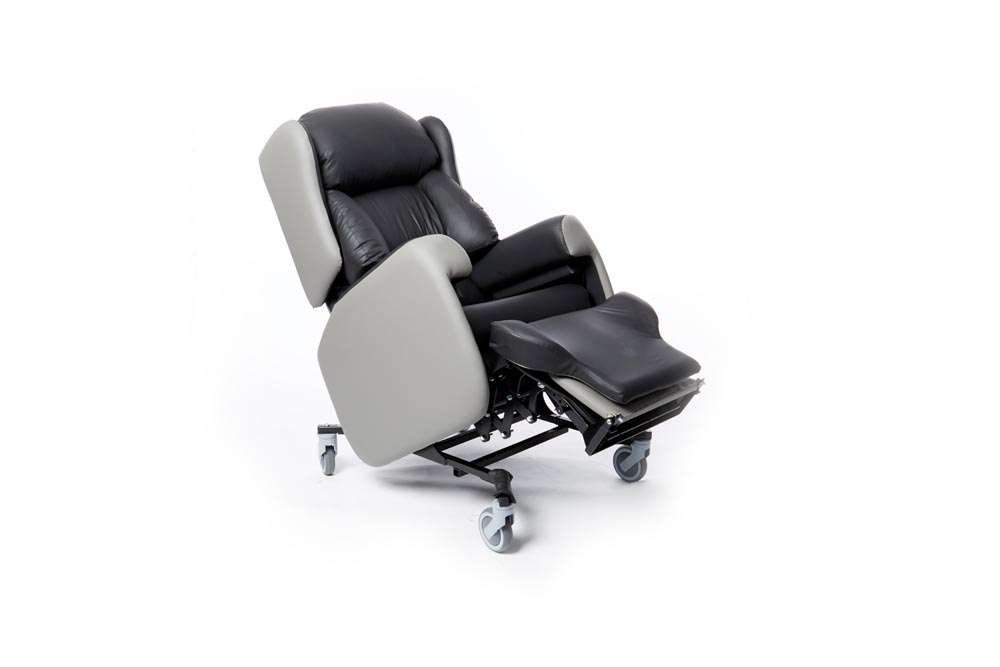
The Lento care chair has tilt-in-space functions and a Velcro backrest that allows you to attach cushions wherever your client needs support.
Tilt-in-space wheelchairs used by clients to get out and about are also beneficial, as some like the Rea Azalea feature tension adjustable backrests to shape and contour the backrest to best support the lumbar region.
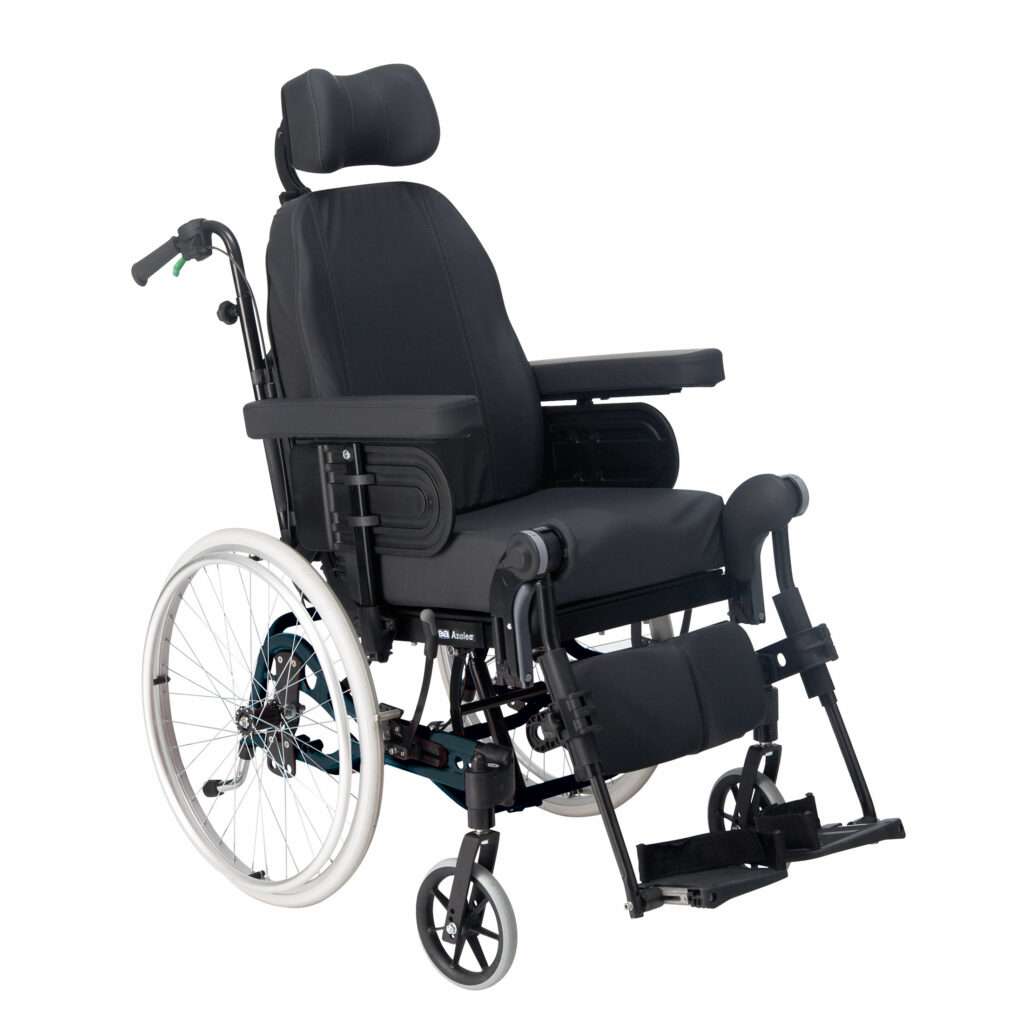
Rea Azalea tilt-in-space wheelchair
Summary
The key things to bear in mind with specialist seating for people with lordosis is that they need to have a stable pelvis and a lot of support around their lumbar area.
For more information on specialist seating for medical conditions, take a look at our free seating eBook!
Download our Free Seating Ebook
FAQs: Chairs for People with Lordosis
What is the best back support for lordosis?
The best back support for lordosis includes a lumbar-supportive chair that accommodates the spinal curve. A waterfall backrest with adjustable lower cushions can help fill the gap in the lumbar region, while tilt-in-space and recline functions allow for better weight distribution and spinal alignment. The ability to customise lumbar support, with Velcro-adjustable cushions or tension-adjustable backrests, is also beneficial for ensuring long-term comfort and stability.
Why is pelvic positioning important for people with lordosis?
Pelvic positioning is crucial because an anterior pelvic tilt can contribute to increased lumbar lordosis. Ensuring that the pelvis is stable and in a neutral position helps support the spine and maintain a healthier sitting posture.
What chair features should I look for when choosing a seat for someone with lordosis?
Key features to consider include:
- Adjustable lumbar support to accommodate the spinal curve
- Tilt-in-space functionality to reduce strain on the lower back
- Adjustable seat depth and height to ensure proper pelvic positioning
- Waterfall backrest cushions that can be customised for extra lumbar support
Are there specific chairs recommended for lordosis?
Yes, chairs like the Brecon rise and recline chair (made-to-measure) and the Lento care chair (with adjustable seat dimensions and tilt-in-space) are ideal for people with lordosis. For wheelchairs, the Rea Azalea tilt-in-space wheelchair is a great option due to its tension-adjustable backrest.
Can tilt-in-space and recline functions help with lordosis?
Yes, using tilt-in-space and recline functions helps shift the body’s weight, reducing pressure on the lower back and improving spinal alignment. This feature is particularly helpful for people with lordosis who need prolonged sitting support.
Where can I learn more about specialist seating for medical conditions?
You can download our free seating eBook for more detailed information on specialist seating solutions tailored to various medical conditions.





